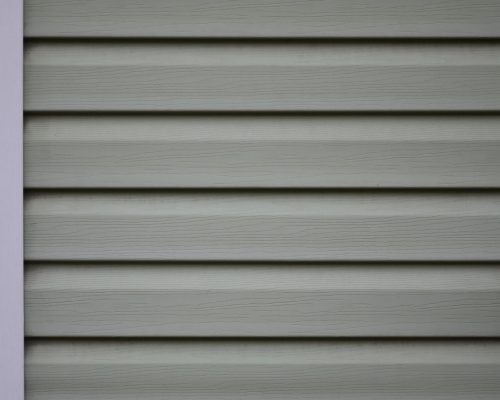
1. Asphalt Shingles
Overview: Asphalt shingles are the most commonly used roofing material in the U.S. They are affordable, versatile, and come in a variety of colors and styles.
Pros:
Cost-Effective: One of the most budget-friendly options available.
Variety of Styles: Available in a range of colors and textures.
Easy to Install: A quick and straightforward installation process.
Cons:
Lifespan: Typically lasts 15-30 years, which is shorter than some other roofing materials.
Environmental Impact: Made from petroleum-based products, making them less eco-friendly.
Best For: Homeowners looking for an affordable, reliable, and easy-to-maintain roofing option.
2. Metal Roofing
Overview: Metal roofs are known for their durability, energy efficiency, and modern look. They come in various materials such as steel, aluminum, copper, and zinc.
Pros:
Longevity: Can last 50+ years with proper care.
Energy Efficiency: Reflects heat, which can help lower cooling costs.
Weather-Resistant: Withstands extreme weather conditions, including high winds, heavy rain, and snow.
Cons:
Cost: Typically more expensive than asphalt shingles upfront.
Noise: Can be noisier during rain or hail, though insulation can reduce this.
Denting: Some metal types (especially aluminum) can dent from falling debris.
Best For: Homeowners looking for a long-lasting, durable roof with good energy-saving properties.
3. Wood Shingles or Shakes
Overview: Wood shingles and shakes are made from natural wood, such as cedar, and provide a rustic, classic look for homes. Shingles are sawn, while shakes are split for a more textured appearance.
Pros:
Aesthetic Appeal: Provides a natural, unique look that adds character to your home.
Insulating: Offers excellent natural insulation against both heat and cold.
Cons:
Maintenance: Requires regular maintenance to prevent rot, mold, and moss.
Fire Hazard: Wood can be more susceptible to fire, although treatments are available to help prevent this.
Cost: Can be more expensive than asphalt shingles.
Best For: Homeowners who value aesthetics and don’t mind regular upkeep.
4. Slate Roofing
Overview: Slate is a premium roofing material made from natural stone, offering a timeless, elegant look. It’s one of the most durable and long-lasting options available.
Pros:
Longevity: Slate can last up to 100 years or more.
Fire-Resistant: It’s naturally fire-resistant.
Aesthetic Appeal: Adds a sophisticated, high-end look to your home.
Cons:
Cost: Slate is one of the most expensive roofing materials.
Weight: Slate is heavy and may require additional structural support.
Installation: Complex installation process that requires skilled professionals.
Best For: Homeowners who want a long-lasting, luxurious roof and are willing to invest in a higher initial cost.
5. Clay or Concrete Tiles
Overview: Clay and concrete tiles are often used for Mediterranean, Spanish, and Southwestern-style homes. They are durable, weather-resistant, and provide a distinctive appearance.
Pros:
Durability: Can last 50 years or more.
Fire-Resistant: Naturally fire-resistant, making it a safe option.
Energy Efficient: Reflects sunlight, reducing cooling costs in warm climates.
Cons:
Weight: Heavy tiles may require reinforcement of your roof’s structure.
Cost: Higher upfront cost than asphalt shingles.
Breakage: Tiles can crack or break under impact, such as fallen branches or debris.
Best For: Homes in warmer climates or those seeking a distinct aesthetic and long-lasting protection.
6. Synthetic Roofing Materials
Overview: Synthetic roofing materials are designed to mimic the look of traditional materials like slate or wood but are made from synthetic materials such as rubber, plastic, or polymer.
Pros:
Lightweight: Easier to install and requires less structural support.
Durability: Offers good resistance to weather conditions and impacts.
Eco-Friendly: Some synthetic materials are made from recycled products.
Cons:
Newer Option: Being a relatively new product, long-term performance is still being evaluated.
Cost: Can be expensive depending on the brand and material.
Best For: Homeowners looking for a durable, environmentally friendly alternative that mimics the look of premium materials.

1. Enhanced Curb Appeal
One of the most immediate benefits of installing new siding is the dramatic improvement in your home’s exterior appearance. Whether you're replacing old, worn-out siding or choosing a new color or style, fresh siding can transform the look of your home, making it more attractive to potential buyers if you're selling, or simply giving it a refreshed look if you're staying put.
Benefits:
Variety of Materials & Styles: Choose from wood, vinyl, fiber cement, or metal siding to achieve your desired look.
Increased Home Value: High-quality, modern siding increases your home’s market value.
Customizable Look: With many textures and finishes to choose from, you can achieve the perfect look for your home.
2. Improved Energy Efficiency
Old, damaged, or improperly installed siding can lead to energy inefficiency, causing drafts and heat loss. New siding, paired with proper insulation, can greatly enhance your home’s energy efficiency, reducing the need for constant heating and cooling. This can result in lower utility bills and a more comfortable indoor environment year-round.
Benefits:
Better Insulation: New siding can improve the insulation of your home, preventing heat from escaping during the winter and keeping it cool in the summer.
Lower Energy Bills: Improved energy efficiency reduces the amount of energy your HVAC system needs to regulate the temperature.
Environmentally Friendly: Reducing energy consumption lowers your carbon footprint and helps you contribute to sustainability.
3. Protection Against the Elements
Siding serves as a protective barrier against the elements. Over time, old siding can warp, crack, or become damaged, leaving your home vulnerable to weather-related issues such as rain, wind, or even pests. Installing new, high-quality siding provides better protection for your home, preserving its structural integrity.
Benefits:
Weather Resistance: New siding helps protect your home from the effects of harsh weather, including rain, snow, wind, and UV rays.
Increased Durability: Materials like fiber cement and vinyl are designed to stand up to the toughest conditions, offering long-lasting protection.
Pest Prevention: Many modern siding materials are resistant to pests like termites and insects, reducing the risk of infestations.
4. Low Maintenance & Long-Term Durability
Older siding often requires frequent repairs and maintenance to keep it looking good and functioning properly. With new siding, especially with durable materials like vinyl or fiber cement, you can significantly reduce the amount of maintenance needed. These materials are designed to withstand wear and tear and last for years without requiring extensive upkeep.
Benefits:
Long Lifespan: Modern siding options are built to last, saving you the cost and hassle of frequent repairs.
Minimal Upkeep: Many siding materials, such as vinyl, are resistant to fading, peeling, and cracking, making them incredibly easy to care for.
Weather-Resistant: New siding materials are specifically engineered to resist the damage caused by wind, rain, and sun exposure.
5. Increased Home Security
While siding isn’t the first thing that comes to mind when thinking about home security, a well-installed siding system can help protect your home from intruders. New siding, especially when combined with sturdy insulation and locking systems, can reinforce the structural integrity of your home, adding an extra layer of security.
Benefits:
Stronger Barrier: High-quality siding materials can provide an additional layer of protection against forced entry.
Insulated Walls: Properly installed siding with insulation can also provide added protection against break-ins by making it more difficult for intruders to damage walls.
Peace of Mind: Knowing that your home’s exterior is reinforced provides peace of mind and can contribute to overall home security.

1. Clean Your Gutters Regularly
Frequency: At least twice a year (spring and fall), but more often if you have overhanging trees.
Why It’s Important: Leaves, twigs, and other debris can quickly accumulate in your gutters, causing clogs that prevent water from flowing properly. Clogged gutters can lead to water backing up, causing damage to your roof, siding, and even your foundation.
Tip: Use a sturdy ladder to safely access your gutters. You can use gloves to remove debris manually or use a small scoop to clear out the gutter trough. A garden hose is helpful for flushing out any remaining debris and ensuring proper drainage.
2. Check for Proper Gutter Slope
Why It’s Important: Gutters need a slight slope (approximately 1/4 inch for every 10 feet) to ensure water flows towards the downspouts. If your gutters are not properly sloped, water can pool in sections, causing overflow and potentially damaging your home’s foundation.
Tip: Use a level to check the slope of your gutters. If you notice standing water, adjust the hangers to achieve the proper slope or contact a professional to repair the alignment.
3. Inspect and Clean the Downspouts
Why It’s Important: The downspouts are responsible for directing water away from your home. Clogs in the downspouts can cause water to overflow, potentially damaging your home’s exterior and foundation.
Tip: Ensure that the downspouts are clear of debris by using a hose or plumber’s snake to remove any blockages. You should also check that the downspouts are properly connected to the gutters and direct water away from your home’s foundation.
4. Install Gutter Guards or Covers
Why It’s Important: Gutter guards or covers help prevent debris from entering your gutters, reducing the frequency of cleaning and minimizing the chances of clogs. They also help keep leaves, twigs, and other debris out, which can be especially helpful for homes with many trees nearby.
Tip: There are several types of gutter guards available, including mesh screens, solid covers, and reverse-curve systems. Choose the one that best suits your needs and budget. While they can’t prevent all debris, they significantly reduce the amount that enters your gutters.
5. Check for Leaks and Damage
Why It’s Important: Leaks or holes in your gutters can prevent them from effectively draining water, leading to potential water damage. Rust, cracks, or separation between sections can be signs that your gutters are deteriorating.
Tip: Visually inspect your gutters for leaks, rust spots, or cracks. If you find any issues, it’s important to repair them promptly. Small holes can be patched with a silicone-based caulk, but extensive damage may require replacing sections of the gutter system.
6. Trim Overhanging Tree Branches
Why It’s Important: Overhanging tree branches can drop leaves and twigs into your gutters, causing clogs and increasing the need for frequent cleaning. Additionally, branches that are too close to your gutters can cause damage to the system over time.
Tip: Trim back tree branches that are within 10 feet of your roof and gutters. This will help reduce the amount of debris that falls into your gutters and minimize the risk of damage.
7. Ensure Proper Downspout Extension
Why It’s Important: Downspouts are designed to direct water at least 3 to 4 feet away from your home’s foundation. If the water is directed too close to your foundation, it can cause soil erosion and water damage to the foundation and basement.
Tip: Check that the downspout extensions are properly installed and extend far enough away from your home. You can add splash blocks or flexible extenders to direct water away from your foundation.
8. Schedule Professional Inspections and Repairs
Why It’s Important: While regular maintenance is essential, professional inspections can help identify hidden issues or problems that are difficult to spot on your own. A roofing or gutter professional can also make repairs that are beyond the scope of DIY maintenance.
Tip: If you’re unsure about performing maintenance yourself or if you spot significant issues, it’s always a good idea to contact a professional. They can thoroughly inspect your gutters, downspouts, and roofing, ensuring that everything is functioning properly.


© 2025 Copyright All rights reserved by lojascontracting.